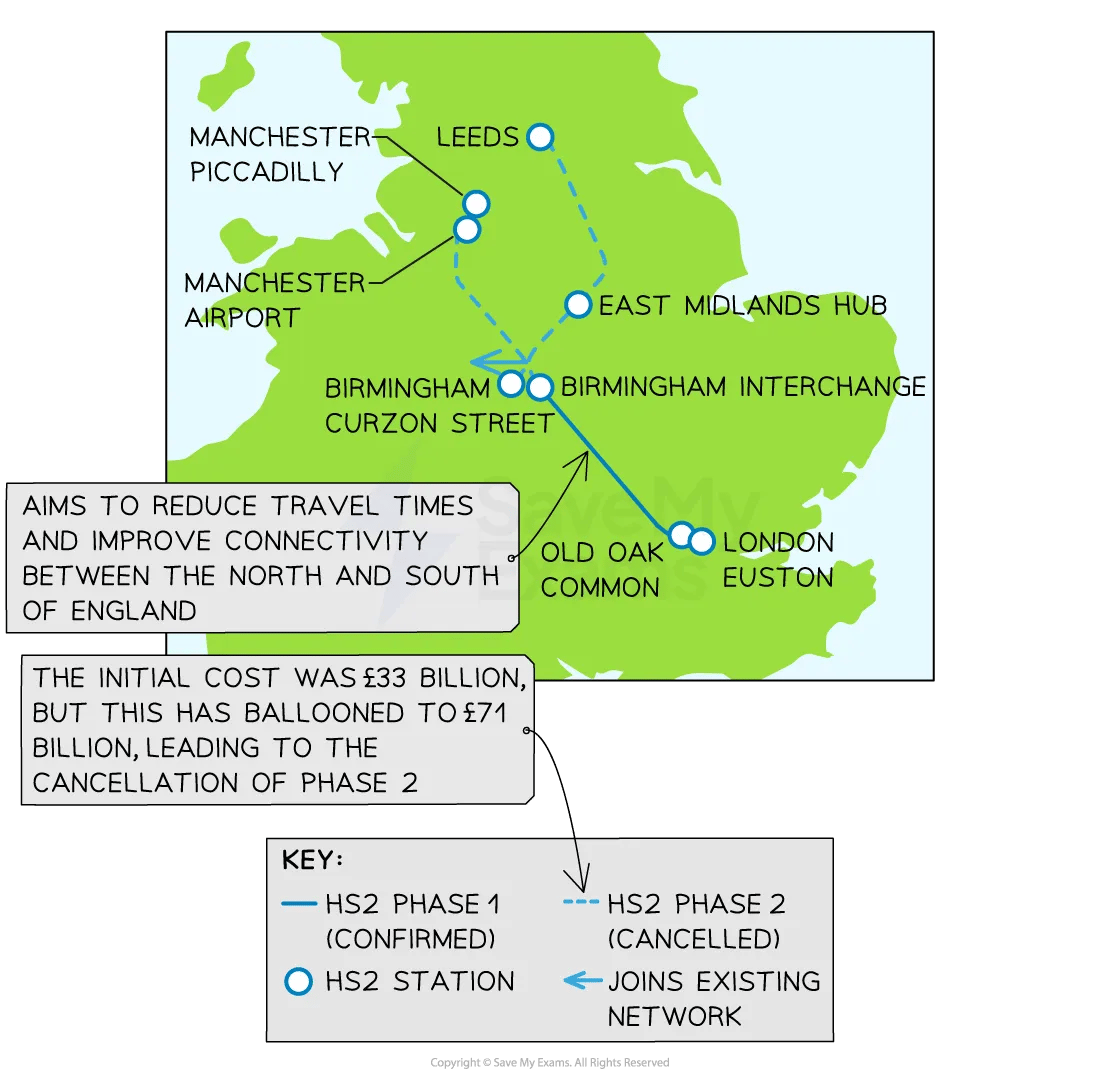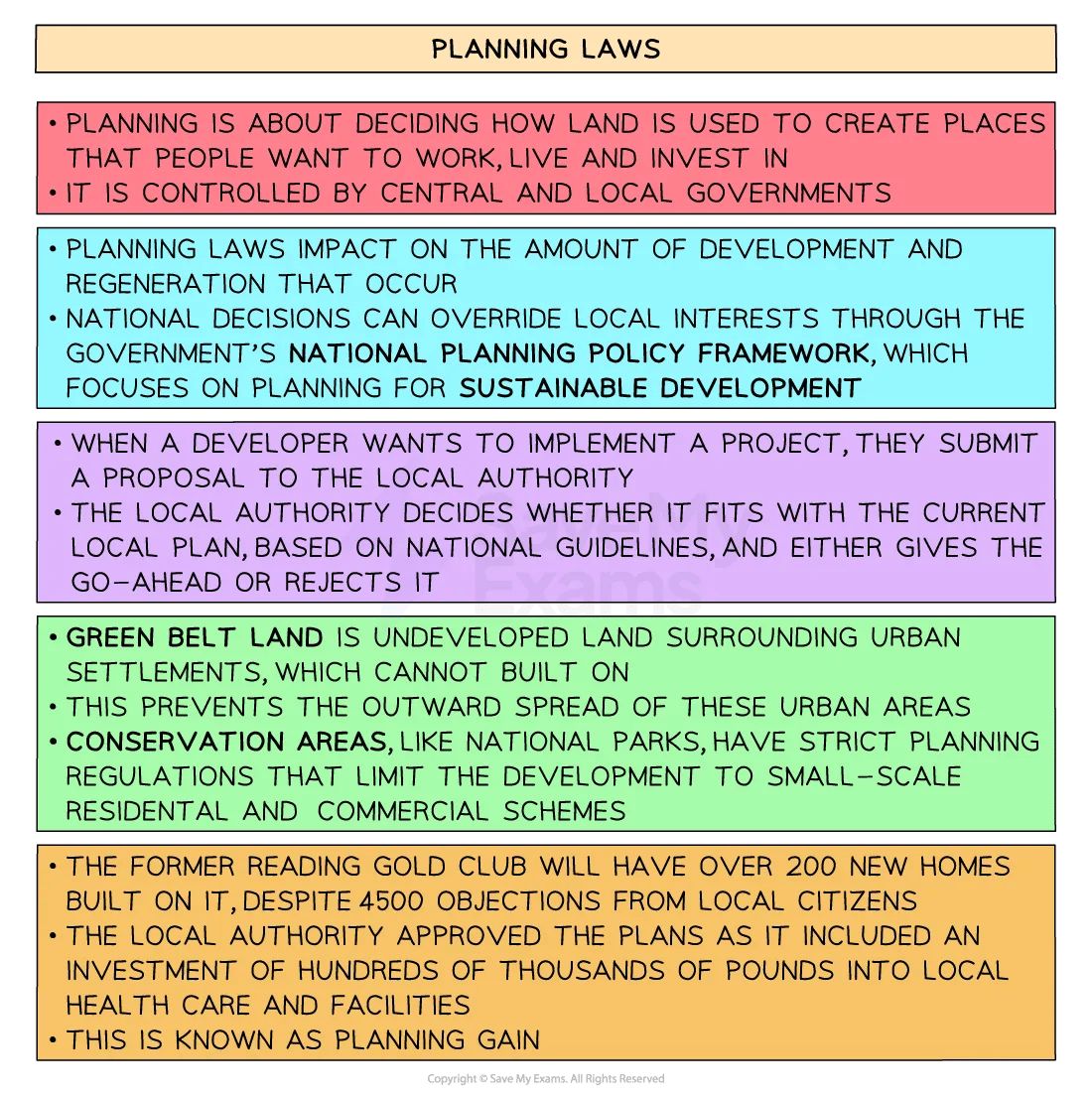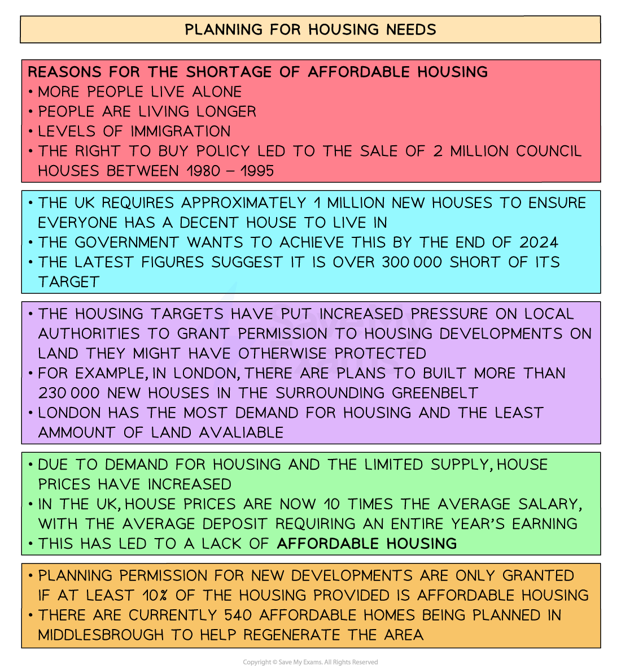Infrastructure Investments
- It is the role of national governments to facilitate regeneration projects, in partnership with charities and developers, to tackle economic, social and environmental inequalities
- By investing in infrastructure, such as high-speed rail and airport developments, the UK government can maintain economic growth and improve accessibility to promote regeneration of regions
- As relatively remote places become more accessible, they become more attractive to businesses and investments, which generates jobs and can lead to the positive multiplier effect
- Infrastructure projects are generally very expensive and take time to complete, so require government backing and funding
- Most projects are public-private partnerships
- The private sector is used to design, build, finance and/or maintain public sector investments in return for a share of profits generated by the project
- A variety of stakeholders are involved in regeneration projects
- Department for Culture, Media and Sport (DCMS) markets the UK’s image abroad and includes Sport England and the National Lottery
- Some of its projects include the London Olympic Park regeneration plan and the various Commonwealth Game developments
- Department for Environment, Food and Rural Affairs (DEFRA) aims to achieve environmental stability as part of sustained economic growth by:
- Developing rural villages in decline
- Protecting eroding coastlines
- Improving the agricultural industry
- UK Trade and Investment supports UK businesses and aims to attract more foreign direct investment
- Local councils aim to improve their area by:
- Attracting new businesses
- Increasing housing stock or improving the quality
- Regenerating a problematic location (abandoned, deprived or dangerous places)
- Non-governmental organisations (NGOs), such as pressure groups, environmental groups, charities and businesses
- Local individuals
- Department for Culture, Media and Sport (DCMS) markets the UK’s image abroad and includes Sport England and the National Lottery
- There may be differences of opinion between stakeholders that need to be resolved by the government or legal systems
- To encourage economic growth within the UK, national infrastructure investment has been used to improve accessibility and reduce the North-south divide
- Examples of infrastructure investment projects in the UK include:
- £27 billion to improve the quality, capacity and safety of the motorways and major A roads, which were largely built in the 1960s and 70s
- HS2 is a new high-speed rail network that will connect London to Birmingham and then the north
- Phase 1 is expected to open between 2029 and 2033
- It has been announced (2023) that phase 2 will no longer go ahead
- Estimated to create 22,000 jobs
- Cut travel times by half
The HS2 route

-
- The expansion and upgrade of Heathrow Airport
- Building a third runway to increase flight capacity by 260,000 flights per year
- Terminals 1 and 3 would be demolished, and terminals 2 and 5 would be expanded over 30 years
- It is expected to cost just under £20 billion, which would be privately funded
- Business leaders are in favour of the expansion, which could boost the wider economy by £61 billion and create an additional 77,000 jobs
- Local residents and environmental NGOs oppose the project as 761 homes will be demolished and pollution will increase with the extra flights
- The expansion project is currently paused due to the pandemic, inflation and the Government’s commitments to reducing the UK’s greenhouse gas emissions
- The expansion and upgrade of Heathrow Airport
Exam Tip
Show that you understand that national governments invest in large infrastructure projects in the UK because of the perceived benefits it will create for places


